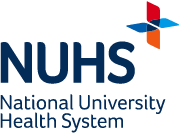Diagnosis
Newborns displaying signs of jaundice in the hospital may undergo a jaundice screening using a transcutaneous bilirubinometer. This non-invasive test is often followed by a confirmatory blood test via a heel prick.
Medical professionals will provide guidance based on the infant's age and bilirubin level. In some cases, phototherapy may be recommended before discharge. Parents might also be advised to have the infant's jaundice and feeding patters reviewed 24 to 72 hours post-discharge.
Seek medical attention if:
- Jaundice appears within the first 48 hours of life, progresses rapidly or persists beyond 14 days.
- Breastfeeding difficulties arise, and the infant shows inadequate stool and urine output, with increasing jaundice.
- The infant's stools are unusually pale or urine is dark and jaundice continues beyond 14 days.
Treatment
Blue-light phototherapy is the primary treatment for hospital-based jaundice. The infant remains under phototherapy lights for approximately 24 hours, with breaks for feeding and diaper changes. This treatment can be administered through overhead lights or a blanket-like device.
During phototherapy, some infants might require supplemental fluids. Breastfeeding should generally continue. If separated from the infant, mothers are encouraged to express breast milk frequently to maintain supply and avoid engorgement.
In rare cases of rapidly escalating bilirubin levels, blood exchange therapy may be necessary to prevent potential brain damage.
It’s important to note that water or glucose feeds do not reduce jaundice. Sunlight exposure and herbal remedies are ineffective and potentially harmful. To aid bilirubin excretion, frequent breastfeeding is encouraged to stimulate bowel movements.

















